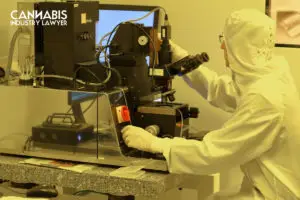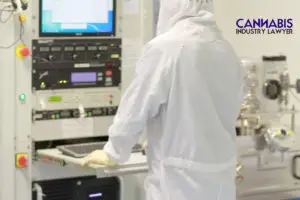 Nanotechnology in cannabis is one of the new trends in the industry: The last few years have been good for cannabis. With more states legalizing the plant, the public starting to –widely- accept the use of cannabis products, and the profits from the industry reaching an all-time high, it’s no wonder other industries would want to hop into the cannabis industry.
Nanotechnology in cannabis is one of the new trends in the industry: The last few years have been good for cannabis. With more states legalizing the plant, the public starting to –widely- accept the use of cannabis products, and the profits from the industry reaching an all-time high, it’s no wonder other industries would want to hop into the cannabis industry.
Nanotechnology has been used in the food and medicine industries for quite some time, and recently, more and more nanotechnology companies are trying to make a shift towards the cannabis industry. And although the potential of nanotechnology in cannabis is just starting to be explored, it’s the perfect time to be asking: what brings nanotechnology to the cannabis industry?
How does nanotechnology in cannabis work
Nowadays, there are just about any kinds of CBD products you can think of out there in the market. Edibles, tinctures, cosmetic and skin products… the list of products can go on forever. One of the newest additions to this list is the nano-CBD products.
For those who don’t know, nanotechnology basically involves shrinking down virtually anything to “nanoscopic” dimensions throughout a fairly complicated process. The final product would be what scientists call “nanoemulsions”.
Why would anybody go through the fuss of going through a complicated process if there are other –simpler- alternatives? Well, by shrinking the particles and breaking the compounds apart, it can technically enter the body through the blood streams and reach the liver way faster than usual.
Nanotechnology can help create new products for the cannabis industry, and this has a lot to do with the nature of CBD.
CBD has lipophilic qualities, which basically means that it is an oil-based compound which –as you may infer- is not soluble in water. As human bodies are 70% water, an oil-based compound has a hard time absorbing cannabidiol. It’s like you’re trying to pour oil in a glass of water.
So, what does nanotechnology has to do with this? Well, when you break down cannabidiol into nanoparticles, it attaches and binds easily with lipids and water molecules. This allows faster and easier absorption of cannabinoids.
RELATED POST: USDA FINAL RULE ON HEMP
RELATED POST: HOW TO GET A MICHIGAN DISPENSARY LICENSE
 Benefits of nanotechnology in cannabis
Benefits of nanotechnology in cannabis
So, nanotechnology in cannabis would basically make products more effective because of how the body would absorb it. It would also help bring to the table new products that weren’t as good before: think about being able to infuse any drink with CBD, for example. Also, take into account that the bioavailability of cannabis or cannabis products when consumed orally ranges between 4% to 20%, according to studies.
What this means is that, if you eat a 100mg edible, your body is probably utilizing 4-20mg and the rest of it is wasted. By nanosizing the cannabidiol particles, you could have a bioavailability of 90% to 100%. So, basically, you’d be getting more for less.
Nanotechnology also has a positive effect on the medicinal cannabis industry. One of the most relevant uses of nanotechnology in cannabis is drug delivery: nanotechnology can be engineered to deliver substances directly to specific cells. Imagine being able to direct the drug to, let’s say, a diseased cancer cell, and thus limiting their ability to bind with healthy cells.
Nanomedicine is already being used to treat and prevent a wide range of diseases and disorders, including cancer, kidney disease, fungal infections, high cholesterol, multiple sclerosis, chronic pain, and asthma.
But, what could be done with the use of nanotechnology in cannabis? Well, scientists have already proven that synthetic cannabinoids delivered by “nanocarriers” are more effective than any conventional delivery method for treating tumor cells. So far, these tests have been carried out in Petri dishes and mice, scientists would need to make clinical trials to confirm whether they work in humans too, but this is obviously a promising research avenue.
The future of nanotechnology in cannabis
Nowadays, there are some companies dedicated to make the most efficient use of the pharmaceutical capabilities of the plant by pairing nanotechnology and cannabis. The idea behind these companies is to optimize the way these products are made. Among these companies, you can find Industrial Sonomechanics. This company offers a wide array of products and services to create CBD or THC nanoemulsions.
However, the future of nanotechnology in cannabis is unknown. Nano CBD products could take the cannabis industry to greater heights if used correctly; on the other hand there are a lot of questions regarding nanotechnology in cannabis and only time will tell if it’s a good path to go follow for the industry.
RELATED POST: NEW YORK SMALL BUSINESS COOPERATIVE LICENSE
RELATED POST: NEW YORK ADULT-USE DISTRIBUTOR

 Benefits of nanotechnology in cannabis
Benefits of nanotechnology in cannabis


